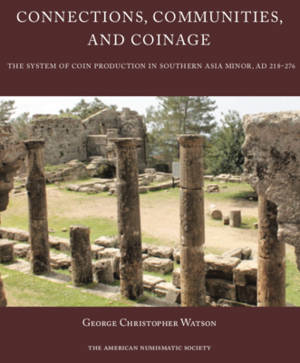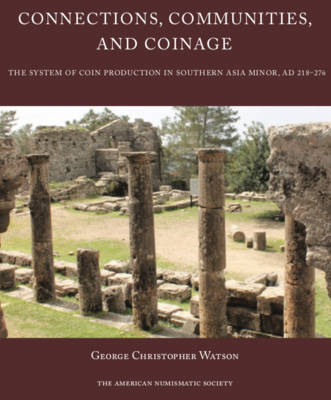
Door een staking bij bpost kan je online bestelling op dit moment iets langer onderweg zijn dan voorzien. Dringend iets nodig? Onze winkels ontvangen jou met open armen!
- Afhalen na 1 uur in een winkel met voorraad
- Gratis thuislevering in België vanaf € 30
- Ruim aanbod met 7 miljoen producten
Door een staking bij bpost kan je online bestelling op dit moment iets langer onderweg zijn dan voorzien. Dringend iets nodig? Onze winkels ontvangen jou met open armen!
- Afhalen na 1 uur in een winkel met voorraad
- Gratis thuislevering in België vanaf € 30
- Ruim aanbod met 7 miljoen producten
Zoeken
Connections, Communities, and Coinage
The System of Coin Production in Southern Asia Minor, Ad 218-276
George Watson
€ 125,95
+ 251 punten
Omschrijving
The chief aim of the book is to address the system of coin production in the regions of Pamphylia, Pisidia and Cilicia during the third century AD. As in much of the Roman East, cities in these regions produced their own bronze coinage, but that this was in some respects collaboratively achieved is shown by the use of the same obverse dies by two or more cities, as well as the appearance of the same engraving style in multiple cities. The most comprehensive study of these phenomena to date is the work of Konrad Kraft, Das System der kaiserzeitlichen Münzprägung in Kleinasien, which was published posthumously in 1972. The book not only examines these questions in an area which was not explored in detail by Kraft, but also radically reappraises his conclusions and opens up new avenues of investigation.
Specificaties
Betrokkenen
- Auteur(s):
- Uitgeverij:
Inhoud
- Aantal bladzijden:
- 208
- Taal:
- Engels
- Reeks:
- Reeksnummer:
- nr. 39
Eigenschappen
- Productcode (EAN):
- 9780897223584
- Verschijningsdatum:
- 6/11/2019
- Uitvoering:
- Hardcover
- Formaat:
- Genaaid
- Afmetingen:
- 213 mm x 300 mm
- Gewicht:
- 3674 g

Alleen bij Standaard Boekhandel
+ 251 punten op je klantenkaart van Standaard Boekhandel
Beoordelingen
We publiceren alleen reviews die voldoen aan de voorwaarden voor reviews. Bekijk onze voorwaarden voor reviews.











